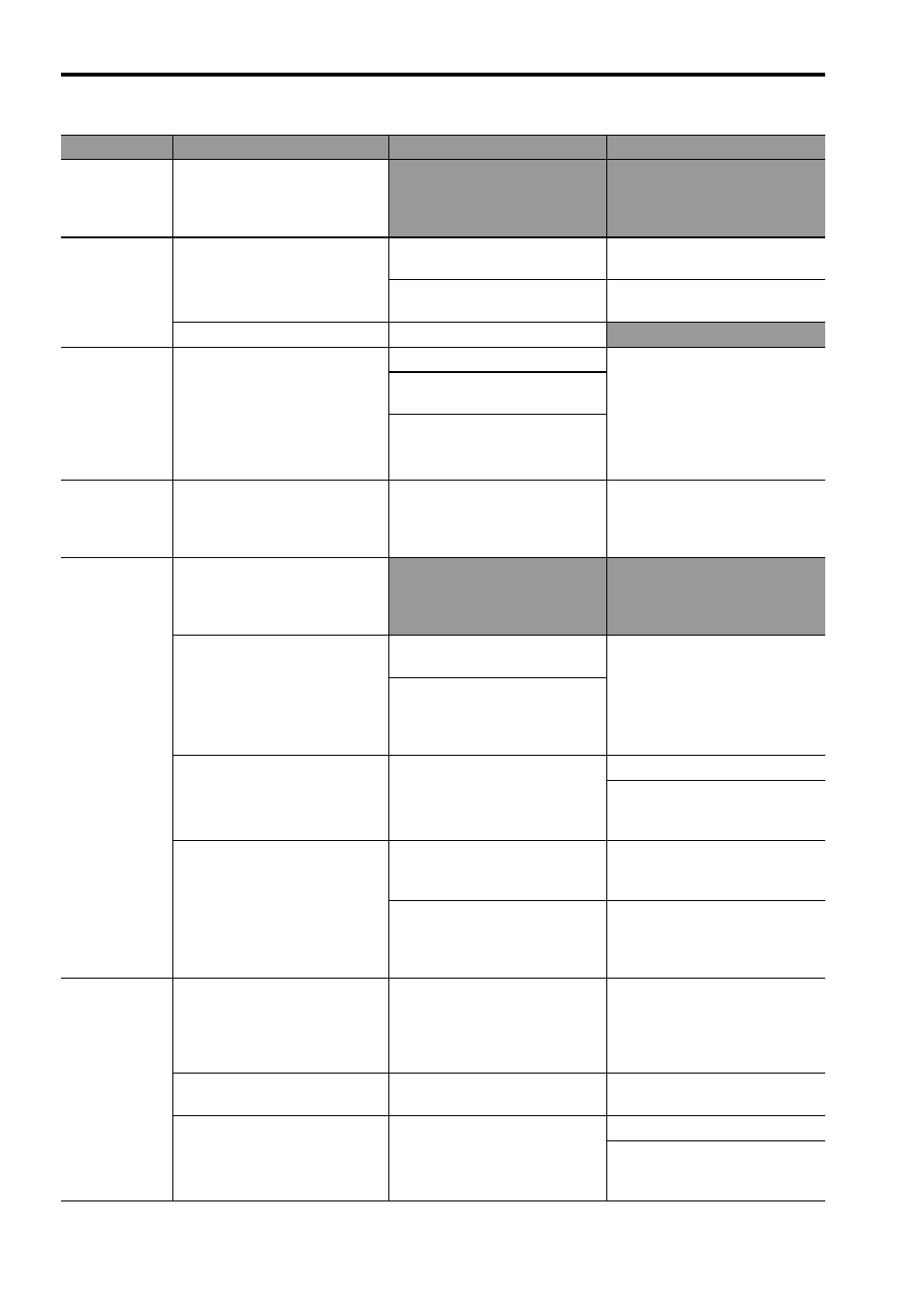Yaskawa Junma Series SERVOPACK User Manual
Page 81

6.2 Troubleshooting for Malfunctions when Alarm Indicators Are Not Lit
E-80
Servomotor
turns for a
moment and
stops.
The wiring of the servomo-
tor main circuit cable and
encoder cable is incorrect.
Check the order of phases U,
V, and W in the servomotor
main circuit cable and the
wiring of the encoder cable.
Correct the wiring.
Servomotor
turns even
without a ref-
erence.
The reference pulse input is
not correct.
Check the reference pulse
type.
Set the suitable reference
pulse type.
Check the voltage of the
reference pulse.
Connect a resistor according
to the voltage.
The SERVOPACK is faulty.
−
Replace the SERVOPACK.
The motor
does not
rotate at the
speed speci-
fied by the
reference
input.
The SERVOPACK is used
with the 100 VAC input volt-
age, and the motor is trying
to rotate at a speed outside
the allowable range defined
by the speed/torque charac-
teristic curve.
Check the input voltage.
Reenter the correct refer-
ence.
Check the speed/torque
characteristics.
Check the reference pulse
speed.
Servomotor
turns in the
wrong direc-
tion.
The CW and CCW inputs
are connected backward.
Check the reference pulse
types of the controller and
the SERVOPACK.
Connect the CW pulse signal
to the CW input and the
CCW pulse signal to the
CCW input.
Servomotor
operation is
not stable.
The servomotor main circuit
cable or encoder cable is not
wired correctly.
Check the wiring of the ser-
vomotor main circuit cable
phases U, V, and W and the
encoder cable.
Correct the wiring.
Misalignment of the cou-
pling connecting the servo-
motor shaft and machine,
loose screws, or load torque
changes resulting from pul-
ley and gear engagement.
Check the coupling to the
machine system.
Review and adjust the
machine.
Operate the servomotor with
no load (i.e., disconnect the
servomotor from the
machine).
The load moment of inertia
exceeds the permissible
value of the SERVOPACK.
Operate the servomotor with
no load (i.e., disconnect the
servomotor from the
machine).
Reduce the load.
Replace the servomotor and
SERVOPACK with ones with
higher capacities.
The connection of the pulse
signal wires is incorrect.
Check the wiring of the pulse
signal wires of the host
controller and SERVOPACK.
Correct the wiring.
Check the reference pulse
types of the controller and
the SERVOPACK.
Set the pulse type of the
SERVOPACK according to
the reference pulse type of
the controller.
Motor over-
heated
The ambient temperature
around the servomotor is too
high.
Be sure that the ambient
temperature around the ser-
vomotor is 40
°C or less.
Reconsider the installation
conditions so that the ambi-
ent temperature will be 40
°C
or less. Cool down the servo-
motor with a fan or cooler.
The ventilation is obstructed.
Check to see if ventilation is
obstructed.
Provide good ventilation.
The servomotor is over-
loaded.
Operate the servomotor with
no load (i.e., disconnect the
servomotor from the
machine).
Reduce the load.
Replace the servomotor and
SERVOPACK with ones with
higher capacities.
Problem
Cause
Inspection Items
Corrective Action